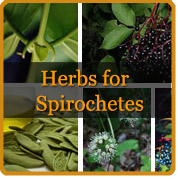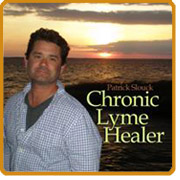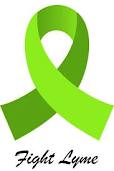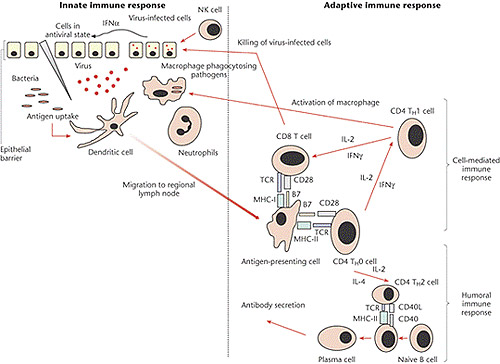











 Herbastat has the herbal ingredients in our opinion of the best kept hidden secret in the herbal remedy community. That's correct; if you take these 8 sugars at the same time your immune system will become super charged. The problem is you could never receive these 8 sugars in your daily diet, when was the last time you ate aloe Vera, shitake mushrooms and shark cartilage at the same time? NEVER…… and that's just three of the 8 sugars. PLUS we added herbs that are widely known to treat Lyme disease.
Herbastat has the herbal ingredients in our opinion of the best kept hidden secret in the herbal remedy community. That's correct; if you take these 8 sugars at the same time your immune system will become super charged. The problem is you could never receive these 8 sugars in your daily diet, when was the last time you ate aloe Vera, shitake mushrooms and shark cartilage at the same time? NEVER…… and that's just three of the 8 sugars. PLUS we added herbs that are widely known to treat Lyme disease.
• Kelp
• Aloe Vera
• Fenugreek
• Shiitake Mushroom Powder
• Whey Protein Isolate
• Trehalose
• Ginkgo
• Psyllium Husk powder
• Pau d' arco
• Olive Leaf
• Astragulas Root
• Liquorice
• Oregon Grape Root
• Wheatgrass
• Spirulina
• Fo-ti Root
• Gota Kola
• Chlorella
• Cat's Claw
• Red Reishi Mushroom
• Echinacea Angustifolia
• Cumin powder
• Maca root
• Sarsaparilla root
• Coconut powder
• Eleuthero Root powder
• Schisandra Berry powder
• Plantain Leaf Powder
• Marshmallow Root Powder
• Slippery Elm Bark
• Fennel Seed Powder
• White Oak bark Powder
These statements have not been evaluated by the Food and Drug Administration. This product is not intended to diagnose, treat, cure, or prevent any disease.
Each of these ingredients speak to the Granulocyte Macrophage Colony-stimulating factors as seen below
GM-CSF is a cytokine that functions as a white blood cell growth factor. GM-CSF stimulates stem cells to produce granulocytes (neutrophils, eosinophils, and basophils) and monocytes. Monocytes exit the circulation and migrate into tissue, whereupon they mature into macrophages. It is thus part of the immune/inflammatory cascade, by which activation of a small number of macrophages can rapidly lead to an increase in their numbers, a process crucial for fighting infection. The active form of the protein is found extracellularly as a homodimer.

The Killer cells
 Given their strong cytolytic activity and the potential for auto-reactivity, NK cell activity is tightly regulated. NK cells must receive an activating signal, which can come in a variety of forms, the most important of which are listed below.
Given their strong cytolytic activity and the potential for auto-reactivity, NK cell activity is tightly regulated. NK cells must receive an activating signal, which can come in a variety of forms, the most important of which are listed below.
• Cytokines
The cytokines play a crucial role in NK cell activation. As these are stress molecules released by cells upon viral infection, they serve to signal to the NK cell the presence of viral pathogens. Cytokines involved in NK activation include IL-12, IL-15, IL-18, IL-2, and CCL5.
• Fc receptor
NK cells, along with macrophages and several other cell types, express the Fc receptor (FcR) molecule (FC-gamma-RIII = CD16), an activating biochemical receptor that binds the Fc portion of antibodies. This allows NK cells to target cells against which a humoral response has been mobilized and to lyse cells through Antibody-dependent cellular cytotoxicity (ADCC).
• Activating and inhibitory receptors
Aside from the Fc receptor, NK cells express a variety of receptors that serve either to activate or to suppress their cytolytic activity. These receptors bind to various ligands on target cells, both endogenous and exogenous, and have an important role in regulating the NK cell response.
NK cells are cytotoxic; small granules in their cytoplasm contain proteins such as perforin and proteases known as granzymes. Upon release in close proximity to a cell slated for killing, perforin forms pores in the cell membrane of the target cell, creating an aqueous channel through which the granzymes and associated molecules can enter, inducing either apoptosis or osmotic cell lysis. The distinction between apoptosis and cell lysis is important in immunology: lysing a virus-infected cell would only release the virions, whereas apoptosis leads to destruction of the virus inside.
NK cells are activated in response to interferons or macrophage-derived cytokines. They serve to contain viral infections while the adaptive immune response is generating antigen-specific cytotoxic T cells that can clear the infection.
Patients deficient in NK cells prove to be highly susceptible to Lyme infection. In order for NK cells to defend the body against viruses and other pathogens, they require mechanisms that enable the determination of whether a cell is infected or not. The exact mechanisms remain the subject of current investigation, but recognition of an "altered self" state is thought to be involved. To control their cytotoxic activity, NK cells possess two types of surface receptors: activating receptors and inhibitory receptors. Most of these receptors are not unique to NK cells and can be present in some T cell subsets as well.
These inhibitory receptors recognize MHC class I alleles, which could explain why NK cells kill cells possessing low levels of MHC class I molecules. This inhibition is crucial to the role played by NK cells. MHC class I molecules consist of the main mechanism by which cells display viral or tumor antigens to cytotoxic T-cells. A common evolutionary adaption to this seen in both intracellular microbes and tumours is a chronic down-regulation of these MHC I molecules, rendering the cell impervious to T-cell mediated immunity. It is believed that NK cells, in turn, evolved as an evolutionary response to this adaption, as the loss of the MHC would deprive these cells of the inhibitory effect of MHC and render these cells vulnerable to NK cell mediated apoptosis.
Function of T helper cells: Antigen presenting cells (APCs) present antigen on their Class II MHC molecules (MHC2). Helper T cells recognize these, with the help of their expression of CD4 co-receptor (CD4+). The activation of a resting helper T cell causes it to release cytokines and other stimulatory signals (green arrows) that stimulate the activity of macrophages, killer T cells and B cells, the latter producing antibodies. T helper cells (also known as Th cells) are a sub-group of lymphocytes (a type of white blood cell or leukocyte) that play an important role in establishing and maximizing the capabilities of the immune system. These cells are unusual in that they have no cytotoxic or phagocytic activity; they cannot kill infected host cells (also known as somatic cells) or pathogens, and without other immune cells they would usually be considered useless against an infection. Th cells are involved in activating and directing other immune cells, and are particularly important in the immune system. They are essential in determining B cell antibody class switching, in the activation and growth of cytotoxic T cells, and in maximizing bactericidal activity of phagocytes such as macrophages. It is this diversity in function and their role in influencing other cells that gives T helper cells their name.
Mature Th cells are believed to always express the surface protein CD4. T cells expressing CD4 are also known as CD4+ T cells. CD4+ T cells are generally treated as having a pre-defined role as helper T cells within the immune system, although there are known rare exceptions. For example, there are sub-groups of regulatory T cells, natural killer T cells, and cytotoxic T cells that are known to express CD4 (although cytotoxic examples have been observed in extremely low numbers in specific disease states, they are usually considered non-existent). All of the latter CD4+ T cell groups are not considered T helper cells. Herbastat has the ingredients in our opinion of the best kept hidden secret in the herbal remedy community.
Herbastat Herpes Cure | Herbal Treatments | Herbal Articles
This statement has not been evaluated by the FDA. This product is not intended to diagnose, treat, cure, or prevent any disease.
DISCLAIMER
The information provided on this Site is for educational purposes only. Please consult a physician before beginning any treatment program or making any adjustments in your health care, diet, and /or lifestyle. Do not remove yourself from any prescribed medications or treatments without consulting your doctor. Any and all dietary supplements or nutritional products discussed on this Site are not FDA-approved and are not intended to diagnose, treat, prevent, or cure any disease.
The information contained in this website is for general information purposes only. While we endeavor to keep the information up to date and correct, we make no representations or warranties of any kind, express or implied. . None of the dietary supplements or nutritional products discussed on this Site are FDA-approved, and they are not intended to diagnose, prevent, treat, or cure any disease or illness.
This Site and its services are for consumer educational use only. Nothing contained in this Site is or should be considered, or used as a substitute for, medical advice, diagnosis, or treatment. This site and its services do not constitute the practice of medicine. Users should always seek the advice of a physician with any questions regarding their health or medical conditions. Never disregard, avoid, or delay obtaining medical advice or following the advice of a physician because of something you have seen or read on this Site.
Antiviral herbs | Candida | Lyme info | Chronic lyme | Herpes | Herpes info | HSV | Lyme Disease | Herbs for dogs | Herbal Company | Viral infection | Healing lyme | Stress | Dealing with herpes
